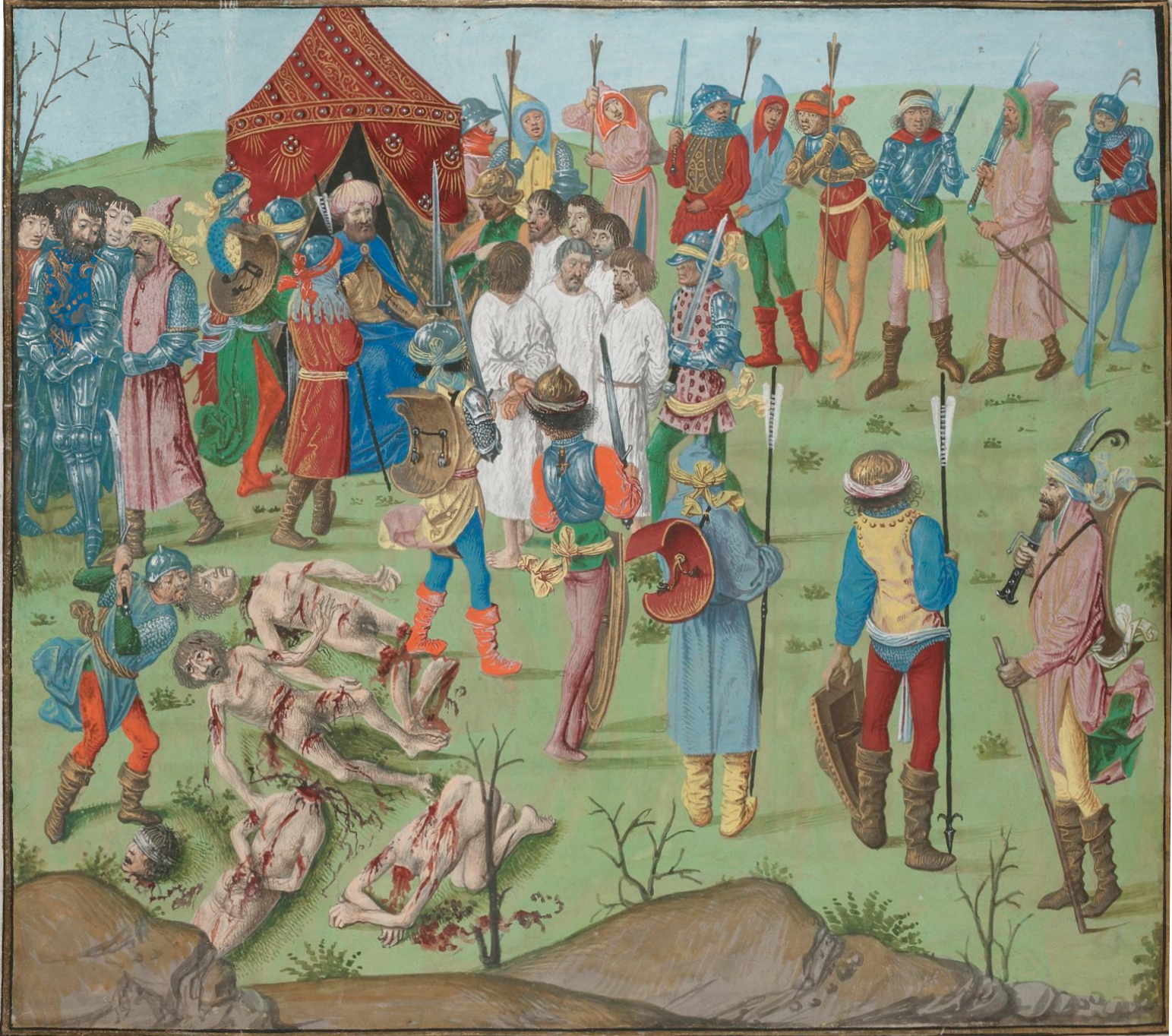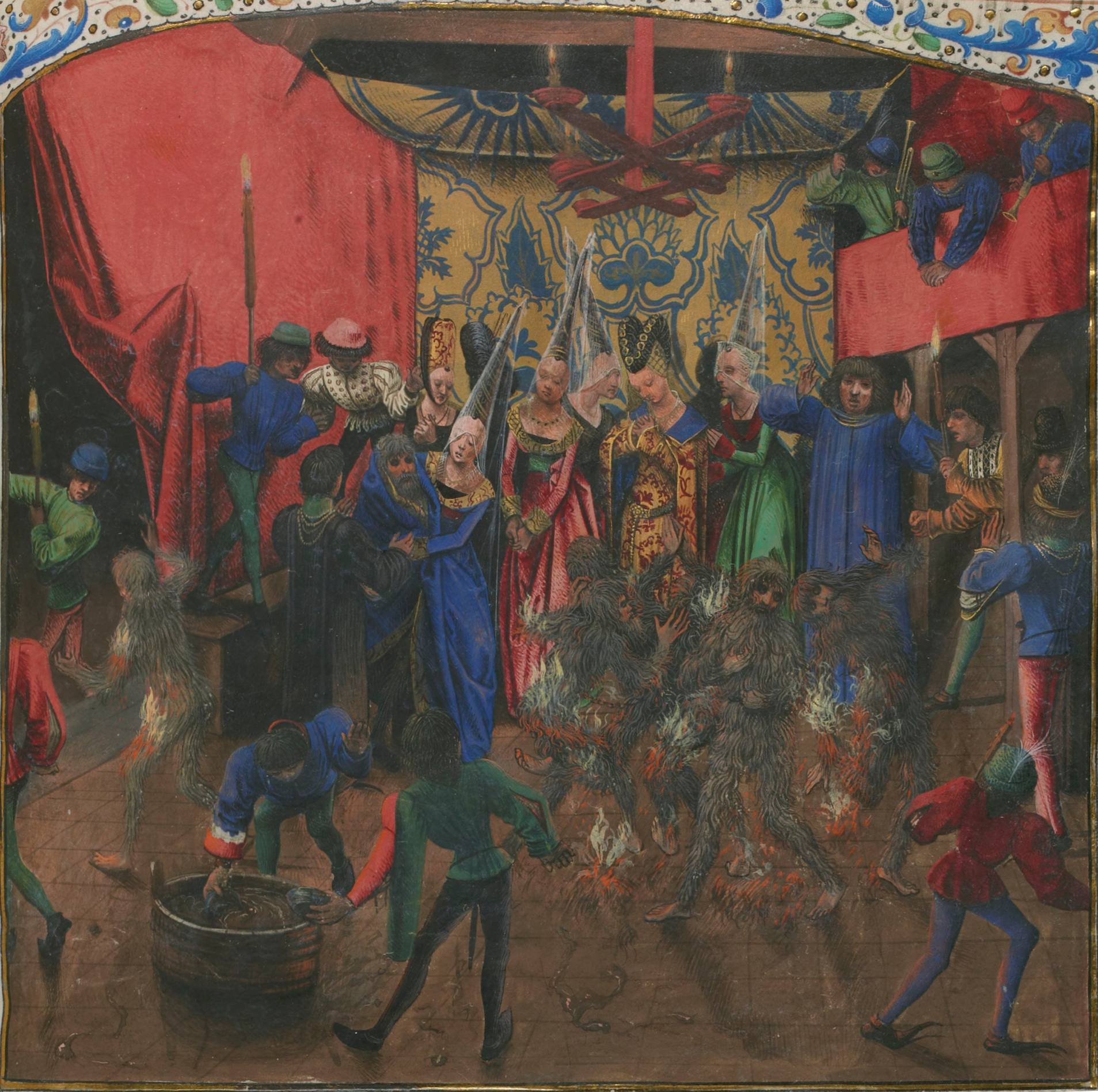|
Battle Of Chizé
The Battle of Chiset also known as the Battle of Chizai or Battle of Chizé was fought at Chizé on 21 March 1373 between English and French forces during the Hundred Years' War. The French had laid siege to the town and the English sent a relief force. The French, led by Bertrand du Guesclin, met the relief force and defeated it. It was the last major battle in the Valois campaign to recover the county of Poitou, which had been ceded to the English by the Treaty of Brétigny A treaty is a formal, legally binding written agreement between sovereign states and/or international organizations that is governed by international law. A treaty may also be known as an international agreement, protocol, covenant, conventio ... in 1360. The French victory put an end to English domination in the area. References * the article is partly based on the equivalent article on French Wikipedia Chiset Conflicts in 1373 1373 in England 1370s in France Hundred Years' War, 1369–1 ... [...More Info...] [...Related Items...] OR: [Wikipedia] [Google] [Baidu] |
Froissart Of Louis Of Gruuthuse
The Froissart of Louis of Gruuthuse (BnF Fr 2643–6) is a heavily illustrated deluxe illuminated manuscript in four volumes, containing a French text of Froissart's ''Chronicles'', written and illuminated in the first half of the 1470s in Bruges, Flanders, in modern Belgium. The text of Froissart's ''Chronicles'' is preserved in more than 150 manuscript copies. This is one of the most lavishly illuminated examples, commissioned by Louis of Gruuthuse, a Flemish nobleman and bibliophile. Several leading Flemish illuminators worked on the miniatures. The four volumes are now in the in Paris as BnF, MSS Français 2643–6, and contain 110 miniatures of various sizes painted by some of the best artists of the day. The page size is approximately 44 × 33 cm, with miniatures of various sizes, from three-quarter–page and half-page, to historiated initials. The French text is in two columns and there is extensive marginal decoration of scrolling stems and other plant motifs, wi ... [...More Info...] [...Related Items...] OR: [Wikipedia] [Google] [Baidu] |
Poitou
Poitou ( , , ; ; Poitevin: ''Poetou'') was a province of west-central France whose capital city was Poitiers. Both Poitou and Poitiers are named after the Pictones Gallic tribe. Geography The main historical cities are Poitiers (historical capital city), Châtellerault (France's kings' establishment in Poitou), Niort, La Roche-sur-Yon, Thouars, and Parthenay. History Historically Poitou was ruled by the count of Poitou, a continuous line of which can be traced back to an appointment of Charlemagne in 778. A marshland called the Poitevin Marsh (French '' Marais Poitevin'') is located along the Gulf of Poitou, on the west coast of France, just north of La Rochelle and west of Niort. At the conclusion of the Battle of Taillebourg in the Saintonge War, which was decisively won by the French, King Henry III of England recognized his loss of continental Plantagenet territory to France. This was ratified by the Treaty of Paris of 1259, by which King Louis annexed Norm ... [...More Info...] [...Related Items...] OR: [Wikipedia] [Google] [Baidu] |
Hundred Years' War, 1369–1389
The Caroline War was the second phase of the Hundred Years' War between Kingdom of France, France and Kingdom of England, England, following the Hundred Years' War (1337–1360), Edwardian War. It was so-named after Charles V of France, who resumed the war nine years after the Treaty of Brétigny (signed 1360). In this part of the conflict, the Crown of Castile emerges as a supporter of France. The Kingdom of France dominated this phase of the war. The Edward the Black Prince, Black Prince, eldest son and heir of Edward III of England, spent a huge sum of money in order to restore Peter of Castile, Peter the Cruel to the throne of Castile. The Castilian King was unable to repay him, however, so the Black Prince raised taxes in his domains in Aquitaine. The people's complaints were unheeded, so they appealed to the French King Charles V. In May 1369, the Black Prince received summons from the French king demanding his presence in Paris. The prince refused, and Charles responded ... [...More Info...] [...Related Items...] OR: [Wikipedia] [Google] [Baidu] |
1370s In France
137 may refer to: *137 (number) *137 BC *AD 137 *137 (album), an album by The Pineapple Thief *137 (MBTA bus) *137 (New Jersey bus) 137 may refer to: *137 (number) *137 BC *AD 137 *137 (album), an album by The Pineapple Thief *137 (MBTA bus) The Massachusetts Bay Transportation Authority bus division operates 151 bus routes in the Boston, Massachusetts metropolitan area. A ... * 137 Meliboea, a main-belt asteroid {{numberdis ... [...More Info...] [...Related Items...] OR: [Wikipedia] [Google] [Baidu] |
1373 In England
Events from the 1370s in England. Incumbents *English monarch, Monarch – Edward III of England, Edward III (to 21 June 1377), then Richard II of England, Richard II. Events * 1370 ** 19 September – Hundred Years' War: Siege of Limoges – The English led by Edward the Black Prince retake the city from the Kingdom of France, French by storm with wide destruction. * 1371 ** 28 March – The London Charterhouse, a Carthusian monastery, is founded in Aldersgate. ** 21 September – John of Gaunt marries as his second wife Constance of Castile, Duchess of Lancaster, Constance of Castile (daughter of King Peter of Castile), giving him a claim to the throne of Castile. * 1372 ** June – Owain Lawgoch claims the title Prince of Wales, sails with French support from Harfleur and raids Guernsey in preparation for an attack on Wales. ** 22 June – Hundred Years' War: the English fleet is defeated at the Battle of La Rochelle by a Castilian-French fleet. Owain Lawgoch fights alongsid ... [...More Info...] [...Related Items...] OR: [Wikipedia] [Google] [Baidu] |
Conflicts In 1373
Conflict may refer to: Social sciences * Conflict (process), the general pattern of groups dealing with disparate ideas * Conflict continuum from cooperation (low intensity), to contest, to higher intensity (violence and war) * Conflict of interest, involvement in multiple interests which could possibly corrupt the motivation or decision-making * Cultural conflict, a type of conflict that occurs when different cultural values and beliefs clash * Ethnic conflict, a conflict between two or more contending ethnic groups * Group conflict, conflict between groups * Intragroup conflict, conflict within groups * Organizational conflict, discord caused by opposition of needs, values, and interests between people working together * Role conflict, incompatible demands placed upon a person such that compliance with both would be difficult * Social conflict, the struggle for agency or power in something * Work–family conflict, incompatible demands between the work and family roles of a ... [...More Info...] [...Related Items...] OR: [Wikipedia] [Google] [Baidu] |
Battles Of The Hundred Years' War
A battle is an occurrence of combat in warfare between opposing military units of any number or size. A war usually consists of multiple battles. In general, a battle is a military engagement that is well defined in duration, area, and force commitment. An engagement with only limited commitment between the forces and without decisive results is sometimes called a skirmish. The word "battle" can also be used infrequently to refer to an entire operational campaign, although this usage greatly diverges from its conventional or customary meaning. Generally, the word "battle" is used for such campaigns if referring to a protracted combat encounter in which either one or both of the combatants had the same methods, resources, and strategic objectives throughout the encounter. Some prominent examples of this would be the Battle of the Atlantic, Battle of Britain, and the Battle of France, all in World War II. Wars and military campaigns are guided by military strategy, whereas battl ... [...More Info...] [...Related Items...] OR: [Wikipedia] [Google] [Baidu] |
Treaty Of Brétigny
A treaty is a formal, legally binding written agreement between sovereign states and/or international organizations that is governed by international law. A treaty may also be known as an international agreement, protocol, covenant, convention, pact, or exchange of letters, among other terms; however, only documents that are legally binding on the parties are considered treaties under international law. Treaties may be bilateral (between two countries) or multilateral (involving more than two countries). Treaties are among the earliest manifestations of international relations; the first known example is a border agreement between the Sumerian city-states of Lagash and Umma around 3100 BC. International agreements were used in some form by most major civilizations and became increasingly common and more sophisticated during the early modern era. The early 19th century saw developments in diplomacy, foreign policy, and international law reflected by the widespread use of tr ... [...More Info...] [...Related Items...] OR: [Wikipedia] [Google] [Baidu] |
French Army
The French Army, officially known as the Land Army (, , ), is the principal Army, land warfare force of France, and the largest component of the French Armed Forces; it is responsible to the Government of France, alongside the French Navy, French Air and Space Force, and the National Gendarmerie. The Army is commanded by the Chief of Staff of the French Army (CEMAT), who is subordinate of the Chief of the Defence Staff (France), Chief of the Defence Staff (CEMA), who commands active service Army units and in turn is responsible to the President of France. CEMAT is also directly responsible to the Ministry of Armed Forces (France), Ministry of the Armed Forces for administration, preparation, and equipment. The French Army, following the French Revolution, has generally been composed of a mixed force of conscripts and professional volunteers. It is now considered a professional force, since the French Parliament suspended the Conscription in France, conscription of soldiers. Acc ... [...More Info...] [...Related Items...] OR: [Wikipedia] [Google] [Baidu] |
Froissart's Chronicles
Froissart's ''Chronicles'' (or ''Chroniques'') are a prose history of the Hundred Years' War written in the 14th century by Jean Froissart. The ''Chronicles'' open with the events leading up to the deposition of Edward II in 1327, and cover the period up to 1400, recounting events in western Europe, mainly in England, France, Scotland, the Low Countries and the Iberian Peninsula, although at times also mentioning other countries and regions such as Italy, Germany, Ireland, the Balkans, Cyprus, Turkey and North Africa. For centuries the ''Chronicles'' have been recognized as the chief expression of the chivalric culture of 14th-century England and France. Froissart's work is perceived as being of vital importance to informed understandings of the European 14th century, particularly of the Hundred Years' War. But modern historians also recognize that the ''Chronicles'' have many shortcomings as a historical source: they contain erroneous dates, have misplaced geography, give in ... [...More Info...] [...Related Items...] OR: [Wikipedia] [Google] [Baidu] |
John Devereux, 1st Baron Devereux
John Devereux, 1st Baron Devereux, (1337 – 22 February 1393), was a close companion of Edward, the Black Prince, and an English peer during the reign of King Richard II. Birth and Ancestry John Devereux of Whitchurch Maund was the son of John Devereux of Manne (Maune or Maund, Bodenham) and his wife Margaret Barre.Morgan G. Watkins. ''Collections Towards the History and Antiquities of the County of Hereford in continuation of Duncumb’s History, Hundred of Radlow.'' (High Town ereford Jakeman & Carver, 1902). Page 42 to 49. Parish of Castle Frome, Genealogy contributed by Lord HerefordG.E.C. ''Complete Baronetage''. (New York: St. Martin’s Press, 1984 irst published in England in 1916. Volume IV, pages 296 to 306 His father came of age in 1323, and fought at the Battle of Crécy. His great-grandfather was William Devereux through his first wife Alice Grandison,Charles J. Robinson. ''A History of the Castles of Herefordshire and Their Lords''. (Logaston ngland Loga ... [...More Info...] [...Related Items...] OR: [Wikipedia] [Google] [Baidu] |




